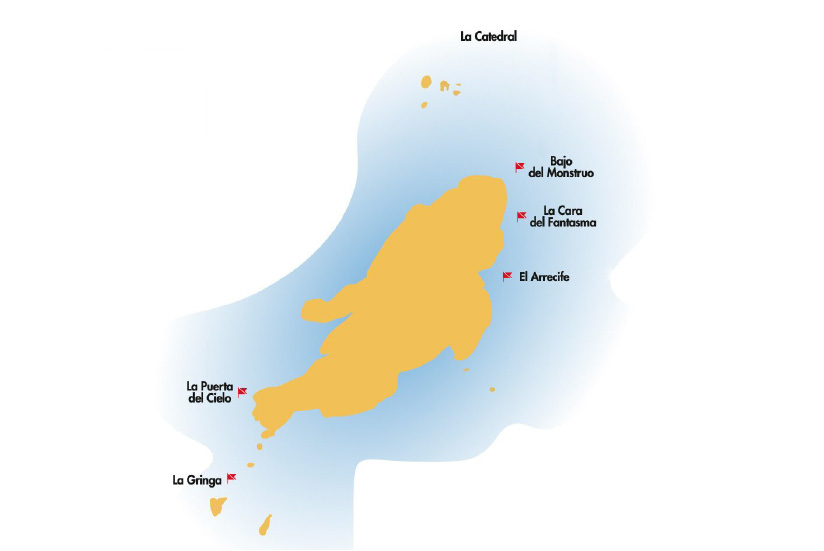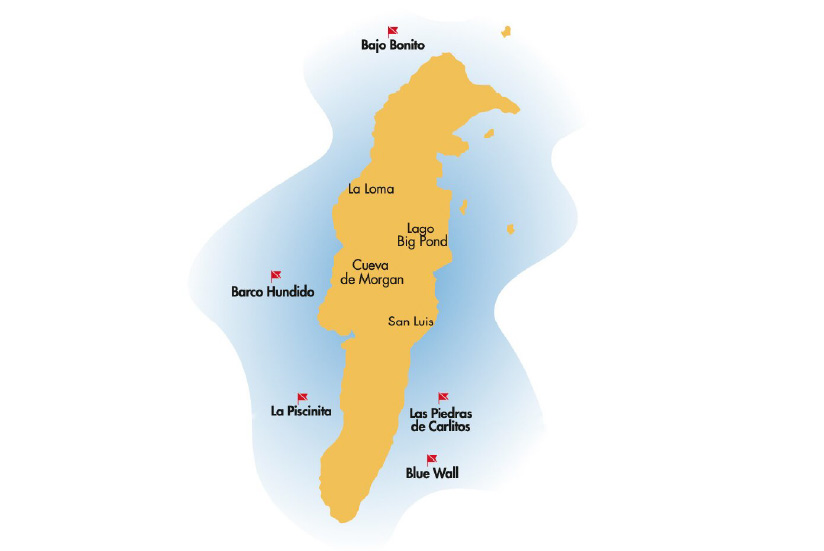Colombia not only has important terrestrial ecosystems but also comprises protected maritime territories where underwater activities are possible. With 56 areas protected by Colombia's National Parks, at least 1.3% of these are part of the country's marine surface.
Thanks to the joint efforts of various actors in collaboration with ProColombia, a guide promoting diving in Colombia as a responsible activity has been created, taking advantage of the country’s aquatic wealth. It is available to the public (soon to be translated) and provides a wide variety of options that cater to all tastes and needs of those visiting the Colombian coasts.

What will you find in the guide?
Colombia is one of the few countries in the world with access to two oceans: the Pacific and the Atlantic (through the Caribbean Sea). This geographical peculiarity grants it exceptional marine diversity. Together, the Colombian Pacific and Caribbean offer a total of 928.66 km² (577 mi.) of coastline that includes over 100 islands, 5 gulfs, 17 cays, and 42 bays, as well as an impressive variety of reefs, mangroves, and coral areas in its depths.
The guide for diving in Colombia provides detailed information on the best season to visit each destination, diving depths, the type of marine flora and fauna that can be found, and the difficulty of the dive, among other details. Additionally, it offers recommendations on the best places to explore around each area with detailed characteristics so that divers can choose according to their skills and interests.
Diving in the Colombian Pacific

Protected areas:
- Utría National Natural Park
- Gorgona National Natural Park
- Sanquianga National Natural Park
- Los Katíos National Natural Park
- Uramba Bahía Málaga National Natural Park
- Malpelo Flora and Fauna Sanctuary
- Diving in the Colombian Pacific is a unique experience. This region stands out worldwide for its natural diversity and rainfall, making it a treasure of global importance. With a rich heritage and ancestral African roots, the Colombian Pacific encompasses 7% of the national territory, home to around 10% of global biodiversity. Its marine ecosystems include beaches, coral reefs, lagoons, and mangroves that offer spectacular underwater landscapes to discover.
In Gorgona, for example, divers can explore crystal-clear waters populated by a wide variety of species, including tropical fish, sea turtles, and rays. The coral reefs of Malpelo are known for their unique biodiversity, which includes hammerhead sharks, whale sharks, and a plethora of fish species. Nuquí and Bahía Solano offer the opportunity to dive in warm and calm waters, ideal for those seeking a relaxing experience in contact with nature.
Below there is information you will find in the guide about one of the destinations in the Colombian Pacific. We invite you to discover it!
General diving information in Malpelo:
- Diving season: January-April, cold water season; May-December, rainy season.
- Depth: between 9 and 42 meters (30 to 140 ft.).
- Difficulty: suitable for advanced certified divers.
- Caves: yes.

Diving in the Greater Colombian Caribbean

Protected areas:
- Corales del Rosario and San Bernardo National Natural Park
- Ciénaga Grande de Santa Marta Flora and Fauna Sanctuary
- Tayrona National Natural Park
- Sierra Nevada de Santa Marta National Natural Park
- Macuira National Natural Park
- Los Colorados Flora and Fauna Sanctuary
- Los Flamencos Flora and Fauna Sanctuary
- El Corchal "El Mono Hernández" Flora and Fauna Sanctuary
- Salamanca Island Park
- Old Providence McBean Lagoon National Natural Park
- Paramillo National Natural Park
On the other hand, the Greater Colombian Caribbean is a paradise of contrasts, where crystal-clear waters merge into white sandy beaches and tropical jungles bordering its coast. Home to a vibrant and diverse culture, with roots in indigenous and Afro-Caribbean communities, carnivals, and music. Recognized for its sacred archaeological sites and one of the most beautiful cities in the world: Cartagena de Indias.
The region offers a wide variety of marine ecosystems, including coral reefs, mangroves, cays, and wildlife sanctuaries. Likewise, the region is composed of dry forests, swamps, and deserts, making it a destination where nature and adventure intertwine in a unique experience.
The impressive marine biodiversity of the Colombian Great Caribbean is found in a wide variety of protected areas, such as Corales del Rosario and San Bernardo National Natural Park, Tayrona National Natural Park, and Los Colorados Flora and Fauna Sanctuary, among others. This region offers an unparalleled diving experience; destinations such as San Andrés, Cartagena, Santa Marta, and the Rosario Islands are highlights not to be missed.
Below you will find some information from the guide about one of the destinations in the Greater Colombian Caribbean. Refer to it to complete your information!
General diving information in San Andrés:
- Diving season: year-round, strong winds between November and January.
- Depth: from 1 to 4 meters (3 to 131 ft.).
- Difficulty: suitable for beginners and advanced divers.
- Caves: yes.

Tips for diving in Colombia responsibly
- Research and prepare: before diving, make sure to have adequate and up-to-date information. Familiarize yourself with local rules, the characteristics of the marine ecosystems you are visiting, and the species you might encounter.
- Respect marine life: avoid touching, feeding, and disturbing marine animals. Keep a safe distance and do not interfere with their natural behavior. Remember, you are visiting their home.
- Leave no trace: take your equipment and trash back with you. Do not litter in the sea or any of the ecosystems.
- Use eco-friendly products: choose products free of chemicals that are safe for coral reefs and marine life.
- Practice and control your buoyancy: this is to avoid damaging the seabed and to ensure your dive does not exceed the limits of your diving equipment.

Diving is a fascinating activity that allows adventurers to immerse themselves in a different world, where marine life exhibits extraordinary beauty and diversity. In Colombia, this experience becomes even more exciting thanks to the variety of marine ecosystems it offers. From coral reefs to historical shipwrecks, each diving site in Colombia has its own charm and offers unique exploration opportunities.
Follow these and more tips from the specialized guide for diving in Colombia so you can enjoy the variety of the underwater world optimally. Learn more about the best diving destinations in the country of beauty and consider our recommendations to protect marine ecosystems and enjoy the seabed safely.
Related posts:



















